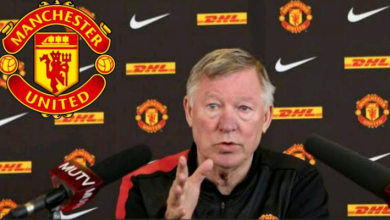“Sancho is a very good player but he has something he has to fix. I think this is the same issue the manager of his former team had with him. I will try to work with him because this draw with Nottingham Forest clearly shows the issues we have to fix” – Enzo Maresca now faces the challenging task of resolving the complicated Jadon Sancho situation following Chelsea’s draw against Nottingham Forest.

Chelsea’s remarkable winning streak hit a roadblock as they were held to a 1-1 draw by Nottingham Forest, a result that not only halted their run but also brought to light concerns surrounding Jadon Sancho. The match, which many expected to be another victory for Chelsea, instead revealed certain tactical issues, particularly in the way Sancho was utilized. Chelsea’s manager, Enzo Maresca, found himself dealing with more challenges than anticipated as Forest put up a stronger resistance than expected.
Heading into this game, Chelsea was on a high, having secured five straight wins across various competitions. They were the favorites to continue their victorious streak. However, things did not unfold as planned. Forest arrived at Stamford Bridge aiming to snatch at least a point from the encounter, and they succeeded, much to Chelsea’s disappointment. While Forest was pleased with the hard-earned draw, Chelsea saw it as two points lost, not one gained, which underscored some of the tactical weaknesses Maresca needs to resolve moving forward.
Throughout the match, Maresca was visibly engaged on the sidelines, frequently instructing his players on their positioning and movement. Much of his attention was focused on Jadon Sancho, who was making one of his first significant appearances since transferring from Manchester United. Sancho, known for his technical skill, struggled to make the desired impact, often coming up short against Forest’s defense. Although Sancho possesses the ability to take on defenders one-on-one, his lack of pace became a noticeable drawback in this match. Forest’s Ola Aina consistently managed to recover and nullify Sancho’s attacks, which significantly hindered Chelsea’s overall offensive strategy.
Chelsea’s recent success had been built on a tactical system that relied heavily on their wingers to create chances in the final third of the pitch. This placed a lot of responsibility on Sancho’s shoulders. However, Maresca’s frustration grew as Sancho repeatedly opted to pass backward or recycle possession rather than drive forward into open spaces. His cautious approach limited Chelsea’s attacking opportunities, leaving Maresca visibly irritated. Sancho appeared reluctant to push his physical limits, even when he found himself in advantageous positions to make a more aggressive play.
The spotlight on Sancho’s performance raised questions about his fit within Chelsea’s system. He was signed with the expectation that he would elevate the team’s attacking capabilities with his creativity and vision. Yet in this match, he seemed hesitant to take risks. His conservative decision-making, where he often chose to play it safe instead of challenging Forest’s defense, contrasted sharply with what Maresca likely expected from him. Sancho’s habit of retreating rather than exploiting gaps in the opposition’s defense will need to be addressed if he is to fully adapt to Maresca’s tactical setup.
While there were frustrations with Sancho’s attacking contributions, there were some positives in his overall play. Defensively, he excelled, working closely with Marc Cucurella to keep Forest’s Callum Hudson-Odoi largely ineffective. This was a positive development for Chelsea fans who may have been concerned about Sancho’s work rate, given his reputation for inconsistency at Manchester United. In this match, however, he put in a strong defensive effort, tracking back, making tackles, and contributing significantly to Chelsea’s defensive resilience. His commitment to these aspects of the game was undeniable, and it played a key role in preventing Forest from finding a second goal.
Nevertheless, the main issue remains: Sancho’s lack of cutting edge in attack. While his defensive work was commendable, his inability to create or capitalize on offensive opportunities is something that Maresca will likely focus on improving. In the highly competitive Premier League, simply beating defenders isn’t enough; Sancho needs to follow through by delivering effective crosses or taking shots that pose a real threat to the opposition’s goal. This becomes even more critical in matches like this one, where Chelsea dominates possession but struggles to break down well-organized defenses.
The 1-1 result may feel like a missed opportunity for Chelsea, especially given their recent form. However, when viewed in the broader context, it can also be seen as progress. Last season, Chelsea lost this same fixture, so a draw represents an improvement, even if there is still work to be done. For Maresca, this match offers valuable lessons on how to maximize the potential of his squad, particularly Sancho, as the season continues.
Unfortunately, the upcoming international break will prevent Maresca from immediately addressing the issues that surfaced against Forest. The team will have to wait to work on their tactics and iron out the problems highlighted in this match. For Chelsea, the break comes at an inconvenient time, but for Sancho, it could provide an opportunity to regroup and reflect on how to better integrate himself into the team’s offensive strategy.
While the result was a disappointment for Chelsea, the match offered important insights into both their strengths and areas for improvement. Sancho’s role in the team remains a work in progress, but under Maresca’s guidance, there is potential for him to unlock his full abilities and become the impactful player Chelsea hoped for when they signed him.




